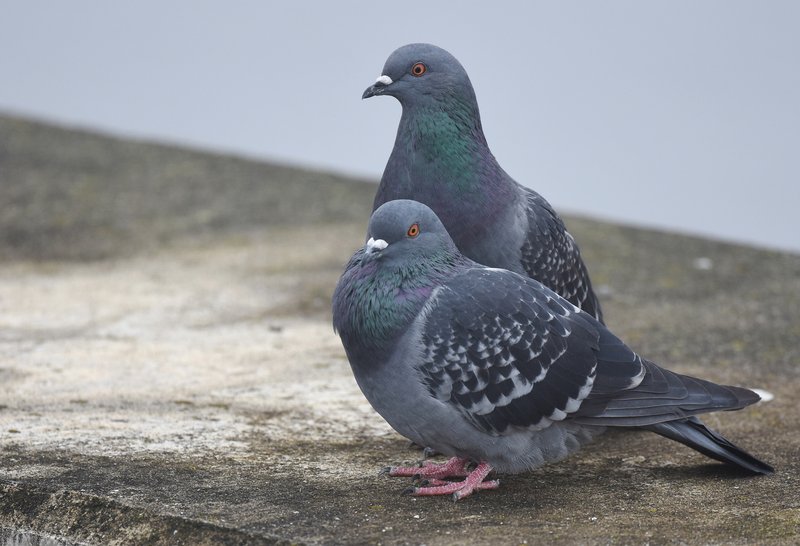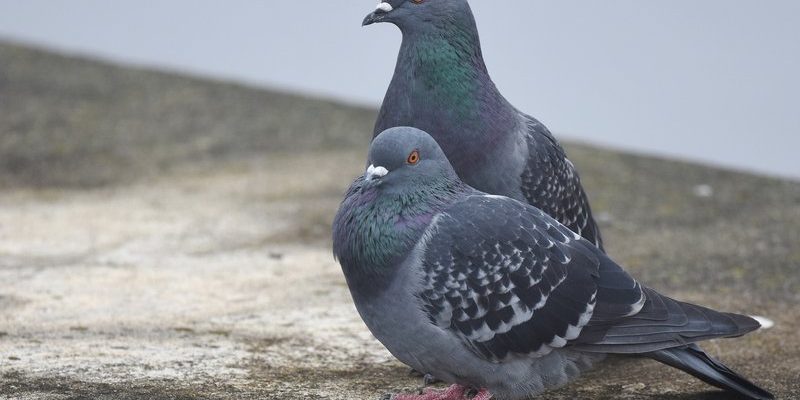
Here’s the thing: despite their prevalence in many cities, rock pigeons have a fascinating history and a complex relationship with humans. While you might call them “just pigeons,” they have a unique story that touches on survival, adaptation, and even conservation efforts. So, let’s dig deeper into whether rock pigeons are threatened or endangered, and what that means for them.
What Are Rock Pigeons?
Rock pigeons, also known as Columba livia, are a species of bird that originally hails from Europe, North Africa, and South Asia. They’ve had a long relationship with humans, domesticated thousands of years ago for food and companionship. Today, they thrive in urban environments all around the world, often seen as a nuisance by city dwellers.
These birds are typically gray with white rumps and black wing feathers. You might notice their striking colors shimmer in the sunlight, especially around the neck area, which can showcase shades of green and purple. Rock pigeons are quite versatile; they are known for their strong homing instincts, making them excellent messengers in the past.
Interestingly, rock pigeons adapt well to various environments. They build nests in nooks and crannies of buildings, cliff faces, or even bridges. This adaptability has helped them flourish in cities, where they often find ample food and shelter. But what does this mean for their conservation status?
Current Status of Rock Pigeons
As of now, rock pigeons are not classified as threatened or endangered. In fact, the International Union for Conservation of Nature (IUCN) lists them as “Least Concern.” This means they have a stable population, and there is no immediate threat to their survival on a global scale.
However, it’s important to note that their status can vary greatly depending on the region. In some areas, rock pigeon populations are robust and continue to grow, while in others, they face challenges. Urbanization and habitat destruction can impact local populations, even if the species as a whole is doing well.
You might be wondering why this matters. Even though rock pigeons are common, changes in their populations can indicate broader environmental issues. For example, if their numbers decline in a specific area, it could signal problems like pollution or loss of habitat that may also affect other wildlife.
Threats to Rock Pigeons
While rock pigeons enjoy a stable status overall, they do face certain threats that can impact local populations. Here’s a closer look:
- Habitat Loss: As cities expand and develop, the natural areas that rock pigeons rely on can shrink. This loss of habitat can make it harder for them to find nesting sites and food.
- Predation: Urban environments can attract predators like hawks or cats, which can pose a threat to rock pigeon populations, particularly fledglings and weak individuals.
- Pollution: Cities can be polluted with toxins that affect all wildlife, including pigeons. Contaminated food sources or unsafe nesting sites can diminish their health and survival rates.
- Human Perception: Some people view rock pigeons as pests. This negative perception can lead to efforts to control or reduce their populations, even when they’re not truly at risk.
Even though these factors might seem concerning, rock pigeons have shown remarkable resilience. They adapt quickly to changing environments, which often helps them bounce back from localized threats.
Conservation Efforts and Public Perception
While rock pigeons aren’t currently on the endangered list, conservation efforts can still play a vital role in maintaining healthy populations. These efforts often focus on ensuring that pigeons have safe nesting sites and access to clean food sources.
Interestingly, public perception is crucial in this equation. Many people don’t realize that rock pigeons have a rich history and play a role in urban ecosystems. Educating the public about their value can lead to a more positive view of these birds. For instance, did you know that rock pigeons help with seed dispersal? This is just one example of how they contribute to city environments.
You might also come across organizations that promote humane ways to manage pigeon populations without harm. This can include providing designated feeding areas or nesting sites to help keep them from becoming a nuisance.
The Role of Rock Pigeons in Urban Ecosystems
Rock pigeons are more than just a common sight in cities. They play an essential role in urban ecosystems. By feeding on discarded food and waste, they help to clean up the environment and contribute to nutrient cycling.
Beyond their role in waste management, rock pigeons are also a food source for various predators. Their presence supports a complex web of life in urban areas, from hawks to urban falcons. This interdependence highlights the importance of all species in maintaining balance within ecosystems.
You might be surprised to learn that rock pigeons are also part of many people’s daily lives. They often spark joy in urban dwellers, especially when they see flocks taking off in unison or a lone pigeon strutting confidently through a park.
So, are rock pigeons threatened or endangered? Right now, they’re categorized as “Least Concern,” meaning they’re doing relatively well compared to many other bird species. However, urbanization, pollution, and public perception all play significant roles in shaping their future.
It’s crucial that we recognize the importance of these birds within our ecosystems and work to protect their habitats, even if they seem abundant. Keeping our cities and parks clean and safe for wildlife can help ensure that rock pigeons continue to thrive for generations to come.
As we move forward, a little awareness and appreciation can go a long way. So, the next time you spot a rock pigeon on your walk, maybe take a moment to reflect on its story—and how it fits into the greater tapestry of urban life.

